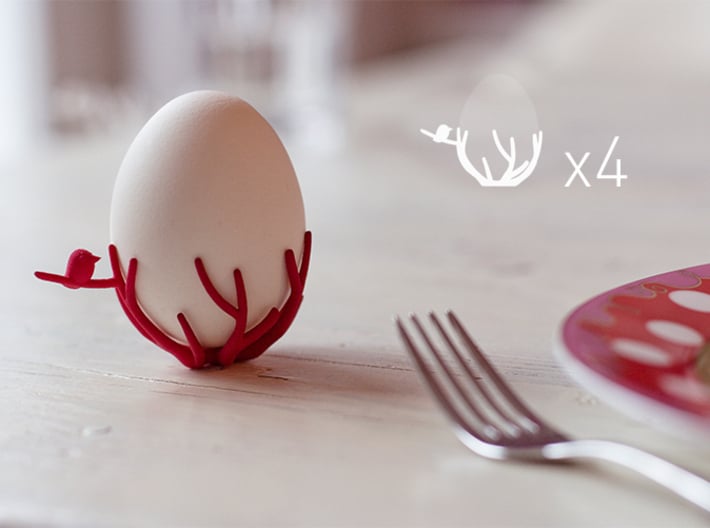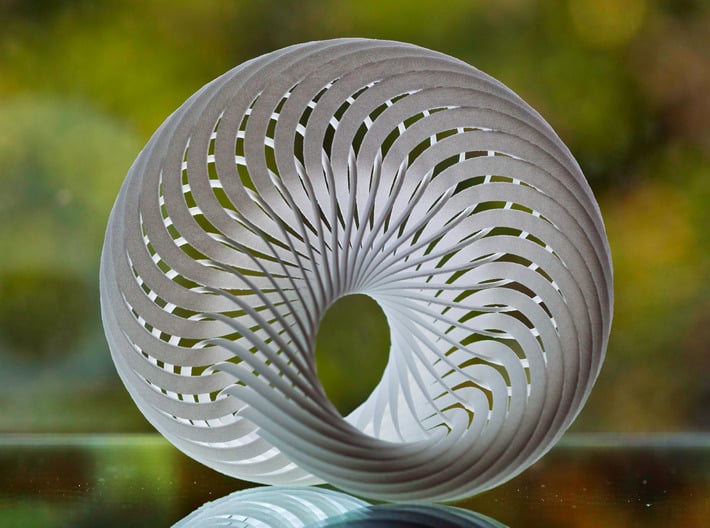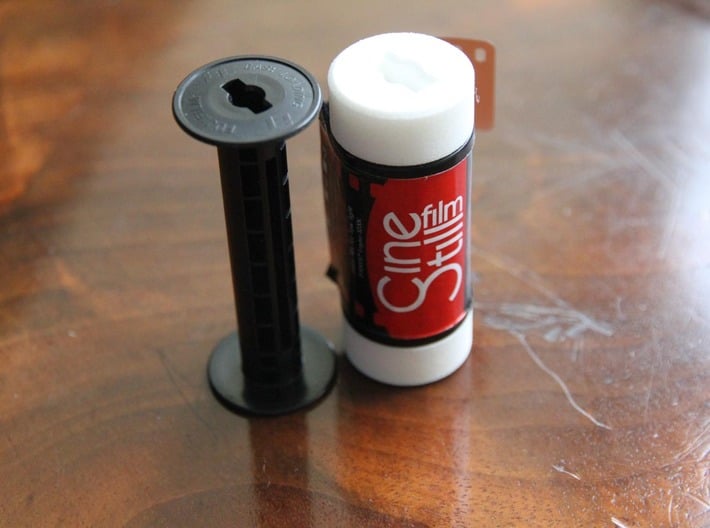
Today the U.S. Supreme Court handed down a decision in the cheerleader uniform case we have been tracking for the past few years. The decision clarifies the test used to determine how copyright applies to many 3D printed objects. While it is too early to say for sure, it likely also greatly expands the scope of copyright protection for those objects.
Why should the 3D printing community care about a case involving cheerleader uniforms again? Because the case is really about a question that comes up often in the world of 3D printed objects. Intellectual property law basically divides the world up into artistic objects that are eligible for copyright protection and functional/useful objects that are eligible for patent protection. This binary division works well when an object is clearly purely artistic (like Joaquin Baldwin’s Mobius Nautalis)…
…or clearly purely functional (like Pinhole Printed’s film spool adapter).
It does not work as well when an object combines artistic and functional elements (like — of course — Studiogijs’ Birdsnest Egg Cup).
Prior to today, there were over ten tests for how to handle these types of objects. Each of these tests tried to figure out what part of the object, if any, was eligible for copyright protection. Remember that copyright protection can last the life of the creator plus 70 years after her death. That means that the difference between an object being protected by copyright and an object not being protected by copyright has repercussions for generations.
The Decision
The decision itself sweeps away those multiple tests for how to handle mixed objects and replaces it with what will hopefully be a fairly straightforward, two-part test:
- Can the artistic parts of the object be perceived as a two- or three- dimensional work of art separate from the useful article?
- If yes, would the artistic parts qualify for copyright protection?
If part of a mixed object passes both of those tests then those parts of the object are protected by copyright. Importantly, it is only those parts of the object that are artistic that are protected. Nothing about this test pulls the entire object into copyright protection. That means that the fact that Smart Design’s Light Switch has antlers that are eligible for copyright protection does not mean the (purely functional) switch plate is also protected.
This test comes with an interesting corollary, which might help explain why it is such a big deal. The test does not care if removing all of the artistic elements from the object allows the remaining object to keep functioning. In other words, it is not a problem if removing the artistic elements from the object would render it functionally useless.
Since we’ve been using it as an example for a while, let’s go back to Studiogijs’ Birdsnest Egg Cup to explain why this is important.

The test as established by the Court can be thought of as a copyright-first test. Looking at the cup, it asks a viewer to pull out all of the parts of the cup that could be perceived as a two- or three-dimensional work of art. Viewed some ways, that’s basically the entire cup. The bird and the branches could all exist as an independent artistic work, even though removing them would leave you with no way to hold your egg. And that’s ok. The test does not care that there might be very little left of the functional parts of the object after you remove those artistic elements. It only cares that the artistic elements can be perceived. Each of those artistic elements are protected by copyright.
An alternative test — one not adopted by the court— could have taken a useful-first approach. Instead of starting with the artistic elements, it could have pulled out the parts of the object that are required for the object to achieve its functional goals. Again, that’s basically the entire cup. The branches, however artistically rendered, also serve the functional purpose of holding the egg. The test could then look at what was left — in this case, that’s basically the bird — and protect those with copyright. This approach would keep functional elements outside of copyright protection and greatly reduce the cup’s connection with copyright.
As you can see, the place where you start this test can have a huge impact on the outcome. Start by removing the artistic elements without concern for the underlying utility and you end up with a lot of stuff protected by copyright. Start by removing the useful parts without concern for the artistic elements and you end up with less stuff protected by copyright.
The Supreme Court decided to start with artistic elements. That makes the process for understanding what parts of mixed objects are protected by copyright a much easier one than before. It also greatly expands the number of mixed objects that are at least partially protected by copyright.
What will that mean in practice? It is hard to say. Copyright can be used as a shield by creators to prevent unauthorized copying of their work. It can also be used as a sword against them because all creation requires building on existing elements in the world. If more of those elements are protected by copyright, it may be harder to create new things without having to get permission first.
This decision came down today so we cannot be sure how it will ultimately play out. We can be sure that we will keep an eye on this and continue to provide updates here on the blog. If you have thoughts or questions, let us know in the comments below.
feature image courtesy Petful.







This decision may have more impact to the fashion industry than the growing 3D printing world. It might be proper to provide different protections to different aspects of the same object. But the goal is to provide protection for what’s valuable. Assuming that the “egg cup” design was the first of its kind – the creator would want to protect the idea that applies various designs into the cup holding an egg, rather the specific design that could be easily substituted with another. But a cup holder idea can hardly get a utility patent (e.g., egg cartons as 102). In other words, the legal dichotomy is illogical in view of function-expression integrity (aka form following functions). But look again, is the “egg cup” intended to hold an egg or intended to hold an egg elegantly, creatively, for entertainment? The law needs update in the statute, more than a mere new test adopted by the SCOTUS.
I think the intent of the new design should be thought of. If I make an eyeglass holder that has branches and a bird, does that infringe on the original design. If I make an egg holder in the shape of a fire breathing dragon and its flames hold the egg, is that an infringement.
Seems to be a tricky situation.
Patent is an idea who’s time has come, and gone.
Given billions of people on the planet, and absurd to “own” an idea.
Furthermore, abused, tech for instance buys patents of others, for monopoly purposes and has no relationship to inventing/inventor.
Furthermore, abused by employers, who abscond with all ownership, leaving those inventing out in the cold.
Shut it down.
There has been a strong argument for review of IP for some time. Disney made their fortune using public domain fairy tales and stories made before the rules but now can protect the new stories they made for more than a generation. The estate of that band suddenly deciding to sue Led Zep over stairway to heaven even though the band themselves never thought it necessary. Patents are granted for fixed lengths regardless of development effort, and large companies seem to get entirely uninventive patents granted where mortals filing similar efforts would be challenged, as well as patent trolls who patent technology they can’t make let alone describing it sufficiently for someone skilled in the art to be able to (supposedly required for a patent). Then there is the fact standards are written to tie in patents held by all members of the consortium that made the standard. Buy a wifi chip and you’d expect an implicit licence for use… nope, the patent holders can make much more money off your finished goods once your product is successful.
There needs to be a system, but creative copyright desperately needs shortening, and patents need to only be given out when the rules are properly met and enforced only at the first intent of infringement (chip rather than product)